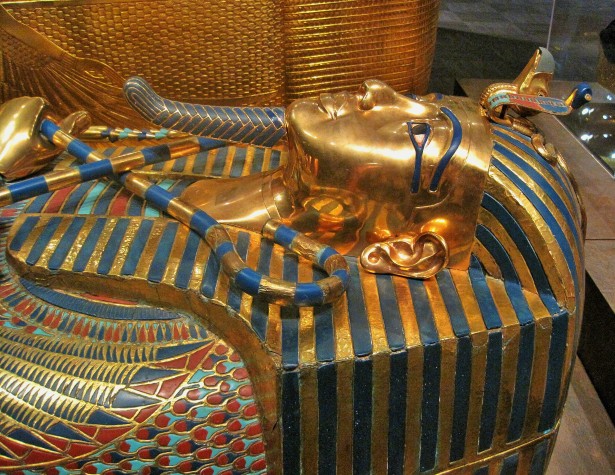Remembering King Tut
November 22, 2022
After exhausting days of excavation, Howard Carter found a historical treasure close to the oasis of Amun, Egypt. It was November 4, 1922, when King Tutankhamun’s tomb was discovered for the first time. Nowadays people remember King Tut’s reign by experiencing this discovery in the Immersive King Tut event, at Lighthouse ArtSpacePhoenix.
A boy whose history is ruling Egypt, and dedicating his short life to restoring Egypt’s religion and arts, reigned from 1333-1323 BCE dying at the young age of 19 years old; although the effort he put in was noticeable, the pass of time some people had forgotten about it. It recently came back to the spotlight with the discovery of his tomb. This discovery brought more than attention to it, thanks to this it is possible to find new theories about Queen Nefertiti’s tomb, without mentioning the relics found in his quarters never been corrupted, creating history in humanity by opening doors to new discoveries about our past and being characterized for being the first intact tomb.
In honor of the 100th anniversary of King Tut’s tomb discovery, the same company as “Immersive VanGogh” and “Immersive Nutcracker” have brought the “Immersive King Tut” exhibition all around the US. In this exhibition, the audience is able to listen to King Tut’s afterlife journey, bringing them closer to the Egyptian religion of his time, beliefs, and society.
After the Pharaoh (King Tut) passed away, Egyptians believed that he would undertake a journey through the afterlife, where he would be provided with a solar barque and would pass through the dangerous underworld, where he would encounter unique creatures such as multi-headed dragons and armed serpents. If he was able to pass through this he would arrive to meet the gods, his previous actions and his heart would be weighted and matched to justice, and once he passed through this proves, unify his soul with the one of gods Osiris in order to seek a peaceful afterlife. The accomplishment of this task did not only affect the Pharaoh’s destiny but the Egyptian civilization as well. If the Pharaoh succeeded in this journey, 24 hours after the Pharaoh’s death the sun would rise once more in Egypt.
Even if the information possessed nowadays regarding King Tut’s life, and the Egyptian civilization that existed during his time is limited, this exhibition has aroused the curiosity of many people by motivating generations to learn more about the history and look into our past.





